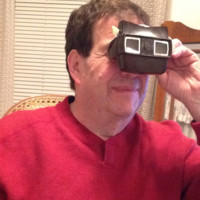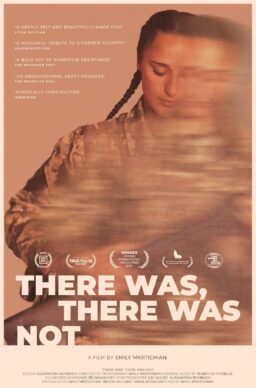Oscar-nominated character actor John C. Reilly has played only a handful of historical personages in his career, among them Noah Dietrich in “The Aviator,” Nikola Tesla on an episode of “Drunk History” and the Ghost of Stonewall Jackson in “Anchorman 2.” So yeah, the prospect of portraying Oliver Hardy, one-half of one of comedy’s most recognizable and beloved teams, in Stan & Ollie, was intimidating.
“I tried to talk the director out of it a couple of times,” he said with a laugh during a phone interview. “Those guys, they are the wellspring for me; I learned so much about comedy and acting from them, and I’ve been watching their stuff my whole life. But (I figured) I’m the right age, the right height and have the right singing voice. I’m not as great as Oliver Hardy, but I’m the guy who can do it right now, so I’ll give them my damnedest.”
Among the laurels he has received thus far for his Hardy are a Golden Globe nomination and Best Actor honors from the Boston Society of Film Critics.
“Stan & Ollie,” directed by Jon S. Baird and costarring Steve Coogan as Stan Laurel, Shirley Henderson as Lucille Hardy and Nina Arianda as Ida Laurel, is not a biopic. It focuses on the aged duo’s 1953 tour of Britain variety halls. “We’re in an age of Wikipedia and Google that if you want to learn the basic facts about Laurel and Hardy’s lives or see their movies, you can get them in seconds (on the Internet),” Reilly said. “What were we going to explore to make this movie worth seeing—their relationship and what it was like to be in that intense a partnership, what it was like to know someone for that long and have your entire career tied to them, what it was like to be a clown. What kind of work behind the scenes does it take to make (the routines) look effortless?”

The British-born Laurel was a contemporary of Charlie Chaplin’s. Hardy was a native of Harlem, Georgia. They were contract players for legendary producer Hal Roach (the “Our Gang” shorts), who first put them in the same movie in 1921’s “Lucky Dog.” Their first film as a planned, rather than an accidental team, was “With Love and Hisses” in 1927, according to William K. Everson’s seminal book, The Films of Laurel and Hardy. “They didn’t know each other when they started working together,” Reilly said. “Hal Roach just decided fat guy and skinny guy; that’ll be funny. And they had this great chemistry onscreen. But they were very different people. At the end of the day, Stan would go home and continue to obsessively write, work on bits and generate material for them as well as sort of shadow-direct the movies. Oliver would go off to the golf course or out to a great restaurant. He had this hedonistic life where he was just enjoying the finer things. They didn’t actually socialize very much. When they were older and doing these tours, spending every single day, every single train ride, every hotel, every backstage right next to each other, that’s when they came to know and love each other, according to Stan.”
Reilly, a Chicago native, was introduced to Laurel and Hardy on television. In the 1960s and ’70s, local stations, hungry for content, played vintage comedies such as the Three Stooges, Our Gang, Buster Keaton and Laurel and Hardy during after-school hours or on movie series such as “Family Classics.” Then came VCRs and home video. “My dad had the videotaped collection of everything they ever did,” Reilly said. “I pored through those things.”
For Reilly, Laurel and Hardy films weren’t just funny; they were a master class in comedy acting and gag construction. “I learned patience and to trust silence,” he said. “When you’re acting, the tendency is to rush a routine because you think the audience is going to get impatient. But Laurel and Hardy were masters at knowing how to build (a gag). They had such patience and courage.”

As a character actor, some of Reilly’s best films have involved him in a partnership, most notably with Will Ferrell. “I’m drawn to partnerships,” he said. “I think it has something to do with this idea that separately we are two different people but when we get together we create a third thing that wasn’t there before. (Whether it’s) Nick Kroll and John Mulaney or Key and Peele, there is something in our DNA that appreciates that cooperation.”
He also credits growing up in Chicago for keeping him grounded and more drawn to ensemble than leading man status. “It’s the idea of, ‘Don’t think you are some big star,’” he joked. “I was always taught to stay humble, that the show is the thing, not my one performance. It’s about making the whole thing work. One of the reasons I’m drawn to partnerships is that it’s more of a dance and more interesting to me.”
Whether it be television, home video or the Internet, generations have always found their way to Laurel and Hardy. “People in their 20s and 30s might only be aware of these guys as an iconic graphic image,” Reilly said. “They may not know Laurel and Hardy by name, but they know the fat guy and the skinny guy.” (A Laurel and Hardy poster hung prominently in Joey and Chandler’s apartment on “Friends”).

Who didn’t love Laurel and Hardy? Even so-called “sick comic” Lenny Bruce said of the team in a 1959 radio broadcast, “The relationship that Laurel and Hardy had was so delightful and such a hard thing to do … You really feel a sincere love there.”
But it was the Marx Brothers, W.C. Fields and Mae West whom Vietnam war-era college students and the counter-culture rediscovered and embraced for their anti-establishment and convention-undermining comedy. Laurel and Hardy fell somewhat off the popular culture radar. Reilly has a theory as to why: the times just weren’t made for two sweet clowns doing humanistic comedy.
“World War II (showed) the cruelty and how destructive Man can be, and there is a certain kind of cynicism that came from that,” he reflected. “People were looking for more aggressive and smart-alecky comedy. A team like Dean Martin and Jerry Lewis became the reflection of America.”
It is Reilly’s hope that “Stan & Ollie” is a gateway for a new generation of Laurel and Hardy fandom. “The larger mission of the film is to keep the flame alive,” he offered. “I think Laurel and Hardy are really unique performers; they have such an empathy to their work. There is something really beautiful about them.”












